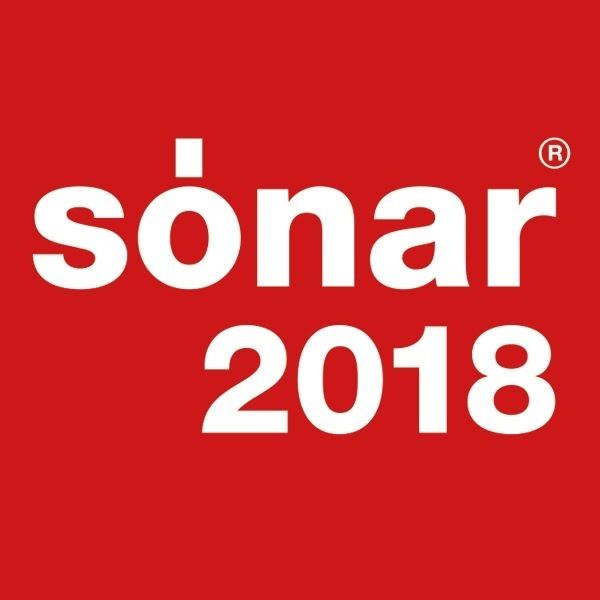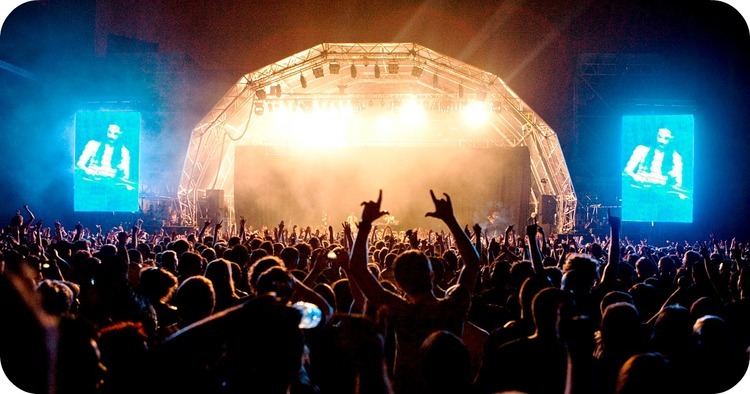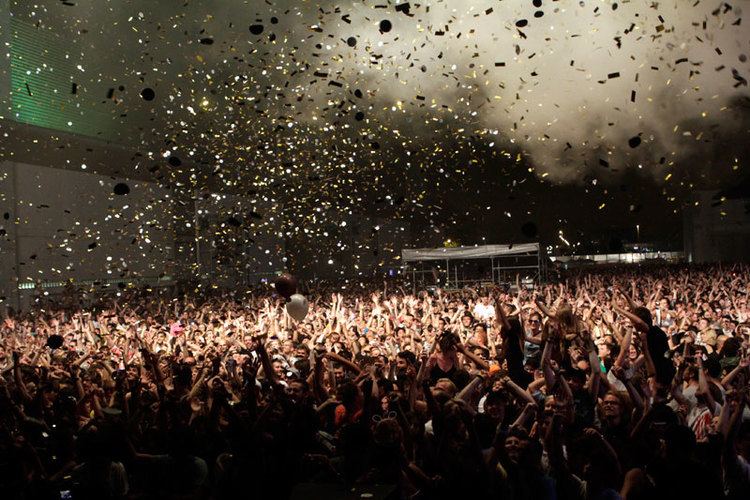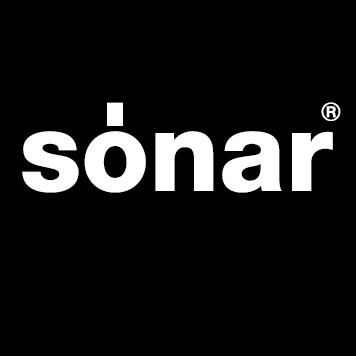Years active 1994 - present Founded by Advanced Music S. L | Dates 24 Mar – 1 Apr 2017 | |
 | ||
Location Istanbul, Turkey, Hong Kong, Stockholm, Sweden Awards DJ Award for Outstanding Contribution Nominations UK Festival Award for Best Overseas Festival Similar Primavera Sound, Festival Internacional de Benic, Bilbao BBK Live, Creamfields, Monegros Desert Festival Profiles | ||
Paul kalkbrenner s nar festival 2013 live set
Sónar is a three-day electronic and advanced music festival. It was founded in Barcelona in 1994 by Ricard Robles, Enric Palau, and Sergi Caballero. The festival has been divided into two parts since its inception: Sónar by Day and Sónar by Night, with Sónar+D, a three-day congress dedicated to Creativity, Technology and Business running concurrently since 2013. The 2016 Barcelona edition attracted 115,000 attendees from 101 countries.
Contents
- Paul kalkbrenner s nar festival 2013 live set
- Birth and early years 1994 1996
- Evolution and growth 1997 2000
- Snar in the twenty first century 2000 present
- Snar and Barcelona
- Snar around the World
- Snar is part of We are Europe
- Audiovisual and multimedia activities at Snar
- Snar D
- SonarImage
- References
Birth and early years (1994-1996)

Sónar was founded in Barcelona in 1994 as the “Festival of Advanced Music and Multimedia Art”, by music journalist Ricard Robles and musicians and visual artists Enric Palau and Sergio Caballero. The first festival took place on 2, 3 and 4 June at the Centre de Cultura Contemporània de Barcelona (Sónar by Day) and the Apolo club (Sónar by Night), with performances by Holger Czukay, Mixmaster Morris, Laurent Garnier, Sven Väth, Atom Heart, and Trans Global Underground, among others. This first event, which included the Record Fair and Technology Fair - the forerunner of what is now known as Sonar+D - was attended by nearly 6,000 people and 40 representatives of the Spanish media.

In the next two years, the festival expanded considerably: the number of accreditation holders doubled in 1995 and tripled in 1996, and the number of visitors rose from 6,000 to over 12,000 in 1995 and 18,000 in 1996. Sónar by Night relocated in its second year, moving to various areas in the Poble Espanyol, where it was based in 1995 and 1996. Some of performances and sessions during these years included Spring Heel Jack, Josh Wink, Autechre, Richie Hawtin, Ken Ishii, Slam, Jeff Mills, Scanner, Orbital, Fangoria, John Acquaviva, Kenny Larkin, and Biosphere.
Evolution and growth (1997-2000)

The year 1997 marked a turning point for the festival, as Sónar by Night moved to a new venue, the Mar Bella sports pavilion, tripling its capacity. With the late 1990s came considerable growth: from 18,000 visitors in 1996 to 28,000 in 1997, 38,000 in 1998, 43,000 in 1999 and over 53,000 in 2000. The festival's evolution can also be measured in the number of accredited media: in 1996 there were 72 Spanish and 15 international media, by 2000 the number had risen to 158 and 185, respectively.
Artists performing at Sónar by Day during these four years included Squarepusher, Fennesz, Bruce Gilbert, Patrick Pulsinger, Pan Sonic, Mouse On Mars, Suicide, Aviador Dro, DJ Spooky, Pole, DJ Zero, Goldfrapp, and Merzbow, Daft Punk, Kraftwerk, Kruder & Dorfmeister, Jimi Tenor, Laurent Garnier (under his real name or the alias DJ Jamon), Marc Almond, Deep Dish, Motorbass, Plastikman, Herbert, Death In Vegas, Fila Brazillia, Roger Sánchez, Coldcut, DJ Hell, Sólo Los Solo, Atari Teenage Riot, An Der Beat, Chicks On Speed, Super Collider, and Miss Kittin.
Sónar in the twenty-first century (2000-present)
In the early years of the new decade, Sónar continued to grow, first stabilizing at around 80,000 visitors each year and then growing further to 121,000 for its 20th anniversary in 2013.
The 2001 festival saw another change of venue for Sónar by Night to the larger venue of the Fira Gran Via area in L'Hospitalet de Llobregat. This new home meant that it was possible to offer large format concerts with an strong audiovisual component, attracting performances by artists such as bjork (2002), Kraftwerk (with a 3D show in 2013) and The Chemical Brothers (2005 and 2015)
The Sónar by Night Venue hosts several stages; the 15,000 capacity SonarClub, the open air SonarLab and SonarPub and SonarCar. In 2016 this stage received an upgrade, featuring a custom sound system and a new format featuring continuous 7hr sets by selected DJ's. The inaugural edition featured Laurent Garnier (who assisted in the format's development) and Four Tet.
Sónar by Day also consolidated its extensive range, which is based not only on music but also the exhibitions at SonarMàtica, the activities at SonarPro, the screenings at SonarCinema, and the installations at Sonarama. During these years, the festival also collaborated with various institutions, spaces, and centres such as the GREC festival, the Centre d’Arts Santa Mónica, the Mies Van Der Rohe Foundation, CosmoCaixa, and L'Auditori, the venue for concerts by the Barcelona Symphony and Catalonia National Orchestra with Ryuichi Sakamoto + Pan Sonic + Fennesz, Francesco Tristano + Murcof, Matthew Herbert Big Band, and DJ /rupture, among many others.
In 2013, Sónar by Day, moved out of its previous home in MACBA to a larger space in the Fira Montjuïc facilities at Plaza d'Espanya. The music program at Sónar by Day takes place over 4 stages: SonarHall, SonarDome, the SonarComplex auditorium and the outdoor stage SonarVillage with its trademark artificial grass.
Notable artists performing in this period include M.I.A., De La Soul, Linton Kwesi Johnson, The Roots, Justice, Hot Chip,Janelle Monáe, Leila, Madlib, Prefuse 73, Ricardo Villalobos, Kode9, Plaid, The Sugarhill Gang, and Flying Lotus. Björk (2002), Beastie Boys (2007), LCD Soundsystem (2010), Chic (2006), Pet Shop Boys (2002), Masters At Work (2001), Grace Jones(2009), and The Chemical Brothers (2005 and 2015), Kraftwerk, Jurassic 5, Richie Hawtin, Skrillex, Paul Kalkbrenner, Major Lazer, Jamie Lidell, Diamond Version, Chromatics, Diplo, Baauer, Nicolas Jaar, Liars, Lindstrøm & Todd Terje, Adrian Sherwood & Pinch, Seth Troxler, Gold Panda. Autechre, FKA Twigs, A$AP Rocky Jean-Michel Jarre, New Order, and Anhoni
Sónar and Barcelona
During its 20-year history, Sónar has transformed the dynamics and atmosphere of the city every June, as well as making Barcelona into the continent's epicentre of electronic music and one of its main attractions in the cultural tourism sector from its very earliest years. In 2004, Sónar contributed 47 million euros to Catalonia's GDP (according to a study performed by Deloitte); three years later, in 2007, the figure had risen to 52 million euros. The impact on hotel occupancy in the city is also considerable in the days before the festival starts; the occupancy rate in 2011 was 83.65%, and in 2012 it was 83.11%. These figures increase to 100% for officially approved tourist apartments.
In addition to the above, Sónar also leads to the proliferation and organization of other events, presentations and showcases that take place in Barcelona outside the scope of the festival itself, which in turn also attract very large audiences of between 50 and 70 thousand visitors, in addition to the 80,000 visitors attending the festival proper.
Sónar around the World
Sónar made its first international foray to London in 2002. Since then, the festival has held events in notable cities such as Chicago, Buenos Aires, São Paulo, Hamburg, Bogota, New York, Seoul, Rome, Cape Town, Copenhagen, Tokyo and Seoul. Sónar+D has also expanded its international program in recent years, forming part of the program in São Paulo (2015) Santiago de Chile (2015), Buenos Aires (2015) and Reykjavik (2015).
Sónar is part of We are Europe
Since December 2015, Sónar is part of We are Europe, a cooperation project co-founded by the Creative Europe programme of the European Union, led by the French organization Arty Farty (Nuits sonores Festival) and gathering 8 major European events joining forces in order to promote, create and produce innovative cultural practices, defined by creative diversity and exchanges.
Audiovisual and multimedia activities at Sónar
Since its early years, Sónar has been committed to being something more than a music festival. In its first year, the festival already launched several activities running parallel to the concerts and sessions. These included the technology and record fair (the roots of the future SonarPro), lectures, video art projections (the origins of SonarCinema), and art installations such as those by Xabela Vargas, Juan Antonio Lleó, and Louis-Philippe Demers & Bill Vorn. This was the origin of what would later become SonarMàtica, a concept that came to fruition in the 1996 festival, and which included installations (Paul Sermon and Ramon Caus in 1996, Victor Nubla and Masaki Fujihata in 1997, Tommi Grondlub & Petteri Nisunen and Carsten Höller in 1998), exhibitions (Designers Republic, Tomato, Charly Brown, Abuse Industries, etc.), demos, performances, conferences, music a la carte, and online content.
1999 saw the creation of SonarCinema, which offered a programme featuring 18 screenings including short films, documentaries, selections of clips and video art works. That same year, SonarMàtica was curated by Oscar Abril Ascaso, and focused on highlighting what was happening at the time in digital art in Barcelona, with works by Rafamateo, Juanjo Sáez, Orange World, Vasava, and Josep Baga. SonarMàtica would subsequently focus on specific themes: Berlin (2000), invisible London (2001), Helsinki (2002), 10 Years of Sónar (2003), micronations (2004), twenty-first century landscaping (2005), the "always connected" culture (Always On, 2006), magic (2007), film (2008), handcrafted instruments (2009), robotics (2010), portraits (2011, in collaboration with the OFF festival), and the new projects by UPF (2012).
In 2002, Sonarama, an exhibition area which focused on sound and audiovisual creation, was created, with works (by Edwin Van der Heide, Christian Marclay, Roland Olbeter, Francisco Lopez, Thomas Köner, Radioqualya and Mike Nelson, among others) that were displayed for several festivals at the Centre d’Art Santa Mònica.
All the non-musical activities at Sónar were subsumed under the heading of SonarPro in 2010, and under the new title of Sonar+D in 2013.
Sónar +D
In its inaugural edition in 1994, Sónar organized a fair for professionals with a dual dimension: a record and publishing fair (record labels, distributors, publications, publishers, promoters) and a technology fair (hardware and software brands, musical equipment companies). This format would undergo several incarnations over the years, gradually evolving away from the trade fair format and expanding to include art installations, film screenings, talks and conferences. Coniciding with the move of Sónar by Day to Fira Montjuic in 2013, this section of the festival program was re-imagined as Sónar+D. Oriented as a 3-day congress of Creativity, Technology and Business running concurrently to Sónar by Day, the congress includes installations, talks, exhibitions and displays of new technologies with creative applications. Sónar +D also feeds from and into the wider festival program, with tech-shows featured across all the festival stages, and prominent artists invited to give talks and workshops. Recent editions have featured artists and thinkers such as Brian Eno, Jean-Michel Jarre and Richie Hawtin, as well as representatives of studios and companies of international note Including as United Visual Artists, Kickstarter and Spotify.
SonarImage
Since its inception, the image of Sónar has been one of the major attractions of the festival. Produced by Sergio Caballero, one of three directors of the event, the aesthetics of the Sónar posters, advertisements and merchandising often use ironic and sometimes even provocative items.
